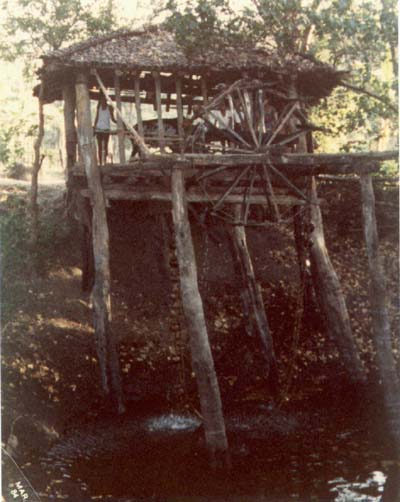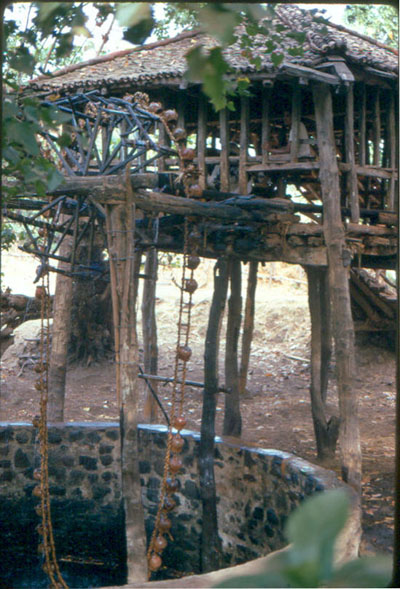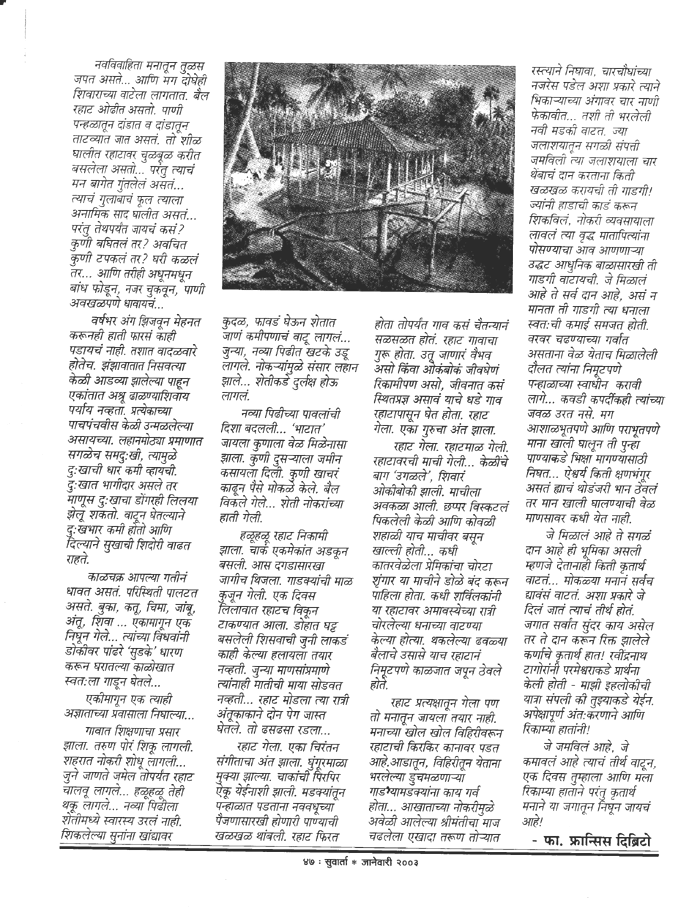
Vasai was and is to some extent an agrarian community. People grew fresh produce, fruits, vegetables beetle leaves and flowers which were supplied to neighboring Mumbai/Bombay. Agriculture was powered by a system called Rahat (राट, राहाट in Marathi) bullocks walking around on raised wood platform pushing horizontal wood shaft mounted on the bullock’s shoulder by a johar (जॉहार), rotating the center vertical shaft called hing (हिंग), which had a fixed toothed wooden wheel, which then rotated another toothed wheel attached a long horizontal shaft saat (सात) at the end of which was a larger circular wood frame dhabda (धाब्डा). Dhabda is supported on a large horizontal beam called kagulau (कागुळाँ) . A long chain (माळ) made of two parallel intertwined dried banana leaf stems ropes, each strand of the parallel rope is called tago (तागेॉ). Tago ropes are held apart at a fixed distance by wood sticks made from bhend tree (भेंड, पारस भेंडी in Marathi) called fada (फाडा) woven in between these ropes holding the two parallel ropes apart. Mounted on this chain (माळ) were oval and slightly elongated wide open mouth earthen pots called bandi (बांडी), tied to the chain (माळ) by rope made from coconut husks called humb (हुंम्ब). The length of the chain extended below to the water level in the well. The chain on the circular wood frame dhabda (धाब्डा) is kept from sliding and falling off by a long vertically tilted wooden pole called Maalharaw (माळहरा).


As the bullock walked around the vertical shaft pushing smaller horizontal shaft, rotating the vertical shaft, powering the long horizontal shaft to rotate the circular wooden frame which rotated the mounted chain (राटाई माळ), the chain, as it dips in the water, the earthen pots scoop up the water and bring it to the surface level where it empties in a wooden trough which is then carried via earthen built channels called dand (दांड) to irrigate the fields. The whole process is called hippna (हिप्प्ना). As the bullock walked, a child or a family member or the farmer himself sat on a small wooden platform called falati (फळाटी) to make sure the bullock did not stop and interrupt the hippna (हिप्प्ना) while another family member made sure water was redirected as needed.
Starting in mid-1970’s Raat started disappearing with the onset of electrification and electric pumps to draw water from the wells. Raat (राट) was laborious, expensive and inefficient to maintain yet the returns on raat powered agriculture were small. Today, Raat remains only in pictures like this one.
Along with the disappearance of Raat, the agrarian life style has also eroded as eloquently described in the following article from the issue Suvarta (सुवार्ता) of Jan 2003.

